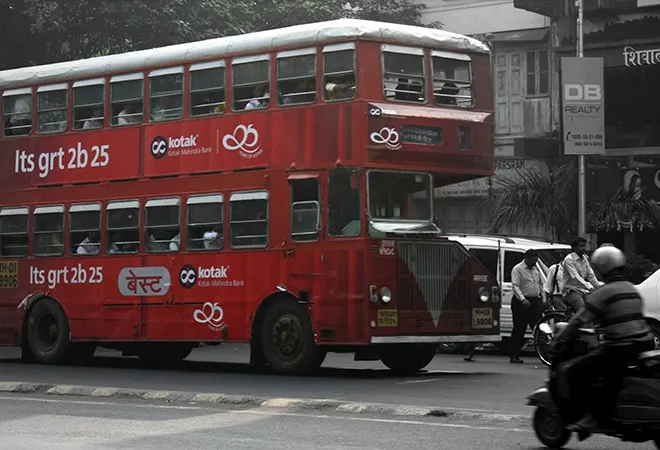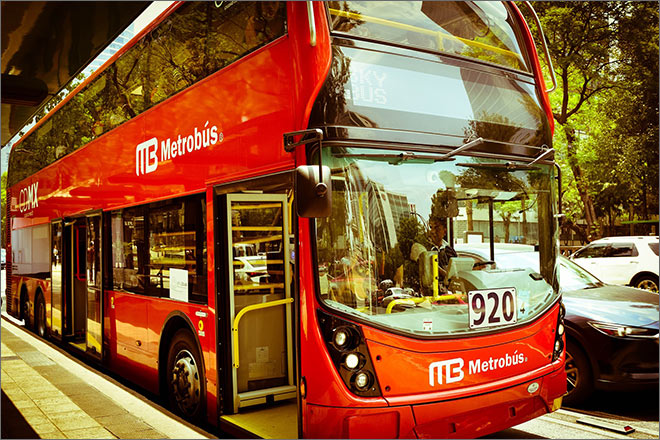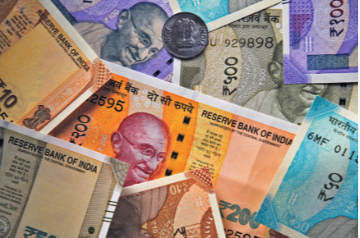
According to a report published in Time magazine in October 2017, six of the most crowded cities globally having 20 million-plus urban population in the increasing order are Mexico City, Mexico — with a population of 21,157,000; Beijing, China (21,240,000); São Paulo, Brazil (21,297,000); Mumbai, India (21,357,000); Shanghai, China (24,484,000); Delhi, India (26,454,000); Tokyo, Japan (38,140,000). Interestingly, Mexico and Brazil both are developing nations and like India, are still grappling with multiple issues such as inadequate finances and resource crunch and carry similar urban population pressure on its public infrastructure.
The bus system has been the backbone, which complements other forms of mass transit systems like suburban trains or metro rails.
All these developed and rapidly developing nations have relied on mass public transit systems to facilitate the movements of their populations and to a large extent, successfully addressed the needs of the masses. One of the key components of the mass public transportation systems in these nations is bus. The bus system has been the backbone, which complements other forms of mass transit systems like suburban trains or metro rails. Mexico City has seven BRTS lines having an average ridership of 1,152,603 per day to complement its 12 metro lines which have an average ridership of 4,616,264 per day. São Paulo has 320 km of exclusive bus lanes, which is backed by robust cycling Infrastructure covering 108 km to support its five metro lines.
As per the 2011 census, 31.2 percent of India’s population (377 million) is living in urban areas. UN estimates predict this number to grow to 40 percent (590 million) by 2030 and to 58 percent (875 million) by 2050. A study of mass transport solutions in these urban centres provide insights which can be adapted and implemented in India’s emerging urban centres.
Interestingly, according to the National Sample Survey Office (NSSO) annual survey of household expenditure on service and durable goods in India, bus is the most preferred means of transport in both rural and urban areas. About 66 percent households in rural areas and 62 percent households in urban areas reported expenditure on this mode. The next most reported means of transport was auto rickshaw, which were reportedly used by 38 percent of rural households and about 47 percent of urban households.
However, other data reflecting expenditure on purchasing new vehicles in India revealed an opposite and worrisome trend. The number of registered vehicles increased from 55 million in 2001 to 159 million in 2012. The share of two-wheelers has increased by four percent, while the share of cars, jeeps and taxis has increased by 0.2 percent. Alarmingly, the share of buses has decreased by 0.34 percent over the same period, clearly reflecting under-investment in improving the capacity of public transport systems by city and state governments. In comparison, the share of buses in the transportation mix of the world’s leading urban hubs has increased in much larger proportion as against the growth of other modes of transport, especially private vehicles. The total supply of public transport in developing cities (vehicle x km) has increased by an average of 3.9 percent annually from 1995 to 2012. Also, the cities such as Beijing, Geneva and London have increased public transport supply at a higher rate than their population increase over the 2001-2012 period. In Brazil, the number of new buses registered has gone up in 2017 as compared to the previous years.
 Mexico City has seven BRTS lines having an average ridership of 1,152,603 per day to complement its 12 metro lines which have an average ridership of 4,616,264 per day.
Mexico City has seven BRTS lines having an average ridership of 1,152,603 per day to complement its 12 metro lines which have an average ridership of 4,616,264 per day.
In most of these global cities, the focus of the city administrations has been on ‘moving people’ and not on ‘moving cars.’ In India’s cities, the trends suggest that the opposite has been true. Globally, cities with good public transport have followed the four key principles of mass transit services and their management:
Branched
In their evolution of efficient transport systems, it has been understood globally that different modes of mass transit do not compete with each other. Rather, they complement each other. One of the keys to success of public transportation planning is to ensure optimum route rationalisation. Routes should be designed in a manner that they serve as the feeder routes to other existing transportation systems and provide the commuters with seamless last-mile connectivity.
Almost a decade ago, NSSO conducted face-to face interviews with households in catchment areas in New Delhi (colonies along the feeder routes) to determine the willingness of the commuters to use feeder services along 36 new routes as a metro link. The objective of the survey was to find the proportion of the non-users likely to use the metro because of these proposed feeder services. The results revealed a strong demand for feeder bus services with an average frequency of the buses being seven minutes and the average distance that a commuter was willing to walk to the bus stop was half a kilometre. The results showed that 72 percent of the respondents were willing to use feeder bus services, clearly establishing the case to have ‘branched’ feeder routes.
One of the keys to success of public transportation planning is to ensure optimum route rationalisation. Routes should be designed in a manner that they serve as the feeder routes to other existing transportation systems and provide the commuters with seamless last-mile connectivity.
Exclusivity
In nearly all global cities, the bus system has an exclusive ‘Right of Way’ giving unrestricted, dedicated, priority bus lanes. India is aping the global trend of ‘priority banking’, ‘priority check-ins and check-outs’ but we are still a long way from creating ‘priority lanes’ for public transportation. An experiment of dedicated bus lanes was done at the Bandra Kurla Complex, Mumbai’s swanky new commercial hub during peak hours. The dedicated bus lane had helped cut travel time by more than half — from 37 minutes to cover a 3.6-km stretch to just 15 minutes. Strangely, despite its success, the experiment, rather than being scaled-up and scaled-out to other areas, was discontinued. Such exclusivity enjoyed by buses through their dedicated priority lanes do take away the existing available lanes available to private vehicles, but in return, gives higher PPHPD (passengers per hour in peak direction) and low carbon emissions. Exclusive bus lanes also bring the focus squarely on the golden rule of mass transport — ‘movement of people’ rather than ‘movement of vehicles.’
State supported
Public transport, by nature, is a service for the welfare of the citizens. In none of the global cities, are these services a source of revenue generation for the governments or specially-created government agencies that operate them. However, buses have efficiently served the larger purpose of state functioning and public welfare, where the city governments have been generous with extending subsidies. The state can, either by itself or through a PPP model, monetise certain services by providing AC and comfortable services, but it cannot shrug away its primary responsibility to provide affordable and subsidised fare to the masses.
Technology driven
With over 100 smart cities being created and another 500 cities to be rejuvenated under AMRUT scheme, it is high time India embraced the use of technology in its public transportation sector. Most of the global cities have incorporated GPRS live tracking feature and user-friendly apps. Many use Artificial Intelligence for ‘planning and scheduling’ or ‘depot management’ systems and have smart ticketing systems. Use of technology provides accurate and timely information about public transportation, which increases its reliability. Commuters should know when their buses will arrive, so that they can plan their trip accordingly. The ‘m-Indicator’ app in Mumbai with over 10 million users provides the schedule of most of the public transportation systems available in the city. However, the app doesn’t show the real time tracking of the service or the data updates in cases of delays or cancellations. Real time tracking and updates will make commuters more confident about the system. A smart city cannot operate in primitive manner, it needs to embrace the use of available technology.
Use of technology provides accurate and timely information about public transportation, which increases its reliability.
Often, we hear argument that the volume of commuters in Indian cities is disproportionate as compared to other cities, hence we cannot follow their models. This may hold true when comparing Indian urban centres with Scandinavian cities. However, there are numerous other urban centres which have overcome similar challenges that India’s cities are facing today and scripted admirable success stories. Some of the biggest urban hubs with 20 million-plus population provide healthy case studies for India to address our domestic urban issues. Ironically, the four golden rules adopted by global cities with robust and efficient public transport systems can be put under the acronym of ‘BEST’, which is also the name of the civic agency responsible for the provision of bus services in Mumbai. We must can learn from them and make the BEST of what we have. From being a model transport service provider, Mumbai’s BEST has been all but trampled over by not only the growing road congestion in India’s commercial capital, but also by the skewed policies that have only focused on infrastructure creating to assist the growth of private vehicles. Same is the case with most other Indian cities.
Paresh Rawal was till recently a consultant at ORF in Mumbai, mainly helping with research on issues of public transport. He is currently an independent entrepreneur and motivational speaker.
The views expressed above belong to the author(s). ORF research and analyses now available on Telegram! Click here to access our curated content — blogs, longforms and interviews.




 Mexico City has seven BRTS lines having an average ridership of 1,152,603 per day to complement its 12 metro lines which have an average ridership of 4,616,264 per day.
Mexico City has seven BRTS lines having an average ridership of 1,152,603 per day to complement its 12 metro lines which have an average ridership of 4,616,264 per day. PREV
PREV

